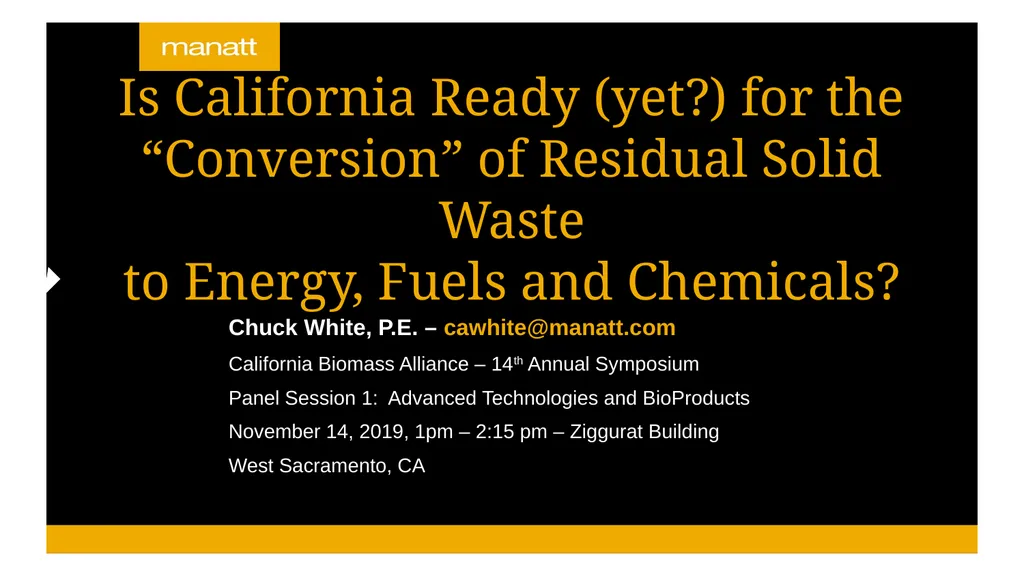
Is California Ready (yet?) for the “Conversion” of
Author: luanne-stotts | Published: 2025-06-23
Description: Is California Ready (yet?) for the Conversion of Residual Solid Waste to Energy, Fuels and Chemicals? Chuck White, P.E. cawhitemanatt.com California Biomass Alliance 14th Annual Symposium Panel Session 1: Advanced Technologies and
Download Presentation
Download the PPT/PDF: Download
Transcript:
Loading transcript�